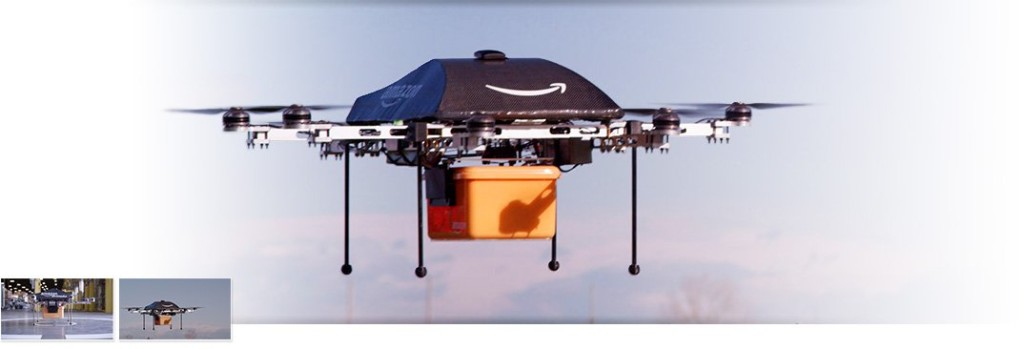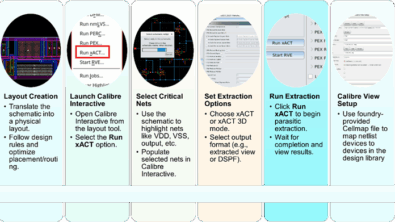Autonomous Systems and IC Reliability
By Matthew Hogan, Mentor Graphics
New standards for IC quality and reliability verification
A lot of attention has been placed recently on the research being done on self-driving cars. It seems that “almost everyone” from Mercedes Benz [1] to BMW [2], Volvo [3], Volkswagen [4] and others are working towards this goal. Partnerships with those not normally associated with automotive, like Google [5] [6], nVIDIA [7] [8] and most recently (claims of) Apple [9], are getting press for their accomplishments, or at least speculation on what they might do.
The grand ambitions for these autonomous systems rely on vastly complex software running on equally complex hardware, comprising innovative IC designs and manufacturing processes. Looming overhead is the constant concern for safety and reliability. From an IC perspective, this means making sure that your designs are robust and reliable over a wide range of operating conditions and time, and that they fail in a known, safe manner.
For many IC manufacturers already within the automotive ecosystem, the functional safety standard, ISO 26262, is something they have embraced and are using as a competitive advantage [10] [11]. For those ramping up, I’m sure there will be many learning opportunities along the way. Certainly the promise and opportunities for self-driving cars are exciting enough to entice new entrants into this field. I expect that work on automobiles will also lead to advancements in other types of autonomous vehicles and devices. The automotive segment is certainly experiencing a lot of competition and focus, not only on functional safety applications, but on infotainment as well. Will companies choose to migrate their existing technology from less demanding disciplines? Will they face struggles from regulators and acceptance of the already established supply chain? Probably.
Proving IC reliability requires a specific mindset and focus when it comes to quality and reliability, a different type of IC verification than the typical DRC, LVS and ERC checks many of us have been using in the past, as mandated by our foundries. Validating that designs are robust over time, will age gracefully, and fail in a known way will play an important role in the acceptance of new technology providers to this space. The established automotive players will undoubtedly desire to continue their dominance in this demanding market.
But the adoption of self-driving cars will not only require technology readiness, but also the acceptance of society and, in particular, our law makers. For example, this month’s IEEE Spectrum [12] showcases an article, “Radar Everywhere”. Radar has been a key technology in advanced driver assistance systems (ASAS) available in many modern cars today. This technology seems to be gaining praise and drivers’ confidence. How autonomous will the next generation of these systems be? From an emotional perspective, I’m sure there are great divides within the community on how much “trust” to put in self-driving cars. How much safer will the roads be when self-driving cars are helping inexperienced new drivers and those at the other end of the age spectrum? If there were a bingle (minor collision), who would be responsible? In the United States, a number of states have made changes to local laws that facilitate the development and deployment of these systems [13] [14], as have other jurisdictions around the world [15].
Suitable laws need to be in place for these and other innovations to take place. Not only for self-driving cars, but also for other innovations that might be seen with skepticism or require oversight by regulating bodies. Recently, it seems that Amazon’s plans for its drone-based Prime Air delivery system [16] (see Fig 1), may have seen a setback, at least in the United States [17].
Fig 1: Images of Amazon’s Prime Air delivery system.
Looking to get packages delivered in 30 minutes or less, these unmanned flying vehicles (aka drones) are subject to FAA regulations that require an operator to have line of sight visual contact with the craft. This requirement limits US based deployment, but other locales are less stringent. The Australian start-up Zookal are planning to deliver text books utilizing drones supplied by Flirtey in 2015 [18] [19] [20].
I was able to get a hold of Matthew Sweeney, Flirtey’s Founder and CEO, who provided some insight on their activities and technology. “Flirtey launched the world’s first drone delivery service in October 2013 and have conducted over 100 successful test deliveries of textbooks outdoors during its test phase in Sydney.” He also told me about some upcoming activities. “In early 2015 Flirtey is launching commercial drone delivery trials with selected customers in New Zealand.” Providing more details on the flight control systems used, Mr. Sweeney added, “Flirtey’s drones fly autonomously based on GPS coordinates, using deconflicted flight paths that are logged with the aviation authority to ensure safety, and lowering the package from the air to the end customer. We use multiple communication links so a human operator can intervene if required. If there are circumstances where cameras are used in the future, Flirtey will implement industry best practices to limit data collection to only the necessary information, protect data during transmission, and set up a regiment for deletion of stored data.” [21]
The avoidance systems being developed for self-driving cars could possibly be leveraged to make these flying drones even more autonomous and safer. GPS, collision avoidance systems, and object identification would all contribute to a more effective flight control system. Again though, the question of IC reliability comes to mind. What standards would IC manufacturers be held to for use in autonomous flight systems used in unmanned delivery drones? What are the thresholds regulators and the public are comfortable with for these markets? How harsh are the operating conditions for ICs in these systems? Would the functional safety standards developed for the automotive industry (ISO 26262 and others) be overkill, or equally valid? Lots of questions! It would seem to me that a convergence of technology might not be long off for these little drones, should there be the will (and by will, I mean financial incentive) to drive this market.
The Harry Potter books (by J. K. Rowling) describe a world where wizarding students receive personal deliveries by their own personal Owl, complete with advanced collision avoidance, and great night vision. How long will it be before a swarm of autonomous delivery drones, or self-driving cars, powered by reliable ICs are considered an everyday part of life? Are there different thresholds for adoption of these technologies depending on where you live (sparsely populated rural areas, or a dense metropolis)? For package delivery, hopefully you don’t live in an apartment building, which might pose somewhat of a problem [22], at least until some of those more annoying little details get sorted, like where to leave the package.
Author
Matthew Hogan is a Product Marketing Manager for Calibre Design Solutions at Mentor Graphics, with over 15 years of design and field experience. He is actively working with customers who have an interest in Calibre PERC. He holds a B. Eng. from the Royal Melbourne Institute of Technology, and an MBA from Marylhurst University.
REFERENCES
[1] The New Mercedes Driverless Car Even Has The Driver’s Seat Facing Away From The Road, http://www.businessinsider.com/mercedes-new-self-driving-car-f-015-2015-1
[2] BMW hits the performance limits with its driverless car, http://www.cnet.com/news/bmw-hits-the-performance-limits-with-its-driverless-car/
[3] Volvo vows to put first self-driving cars in customers’ hands by 2017, https://autos.yahoo.com/blogs/motoramic/volvo-vows-the-first-self-driving-car-in-customers–hands-by-2017-202033465.html
[4] Volkswagen Shows Off Self-Driving Auto Pilot Technology For Cars, http://www.motorauthority.com/news/1062073_volkswagen-shows-off-self-driving-auto-pilot-technology-for-cars
[5] Google driverless car, http://en.wikipedia.org/wiki/Google_driverless_car
[6] Google partners with auto suppliers on self-driving car, http://www.reuters.com/article/2015/01/14/us-autoshow-google-urmson-idUSKBN0KN29820150114
[7] Nvidia Envisions Self-Driving Cars, http://www.eetimes.com/document.asp?doc_id=1325676
[8] Nvidia’s Tegra X1 aims to make driverless cars more reliable, http://www.computerworld.com/article/2864593/nvidias-tegra-x1-aims-to-make-driverless-cars-more-reliable.html
[9] Apple’s Automobile Project Said to Include Self-Driving Cars, http://www.macrumors.com/2015/02/14/apple-car-self-driving/
[10] Functional Safety for ISO 26262 and IEC 61508, http://www.freescale.com/webapp/sps/site/overview.jsp?code=FNCTNLSFTY&fsrch=1&sr=4&pageNum=1
[11] Infineon Introduces Dual-Sensor Package Devices for Safety Critical Automotive Applications; Redundant Sensor Architecture Supports ASIL D Systems and Helps Shrink System Footprint and Reduce Cost, http://www.infineon.com/cms/en/about-infineon/press/press-releases/2014/INFATV201410-003.html
[12] Radar Everywhere, IEEE Spectrum, Vol. 52, no. 2 (NA) Feb 2015, pp52-59, http://ieeexplore.ieee.org/stamp/stamp.jsp?tp=&arnumber=7024512
[13] Automated Driving: Legislative and Regulatory Action, http://cyberlaw.stanford.edu/wiki/index.php/Automated_Driving:_Legislative_and_Regulatory_Action
[14] States take the wheel on driverless cars, http://www.usatoday.com/story/news/nation/2013/07/29/states-driverless-cars/2595613/
[15] Driverless cars on British roads in six months as ministers change law to allow trials of Google-style vehicles, http://www.dailymail.co.uk/sciencetech/article-2710370/Driverless-cars-British-roads-year-ministers-change-law-allow-trials-Google-style-vehicles.html
[16] Amazon Prime Air, http://www.amazon.com/b?node=8037720011
[17] FAA shoots down Amazon’s drone delivery plans, http://www.usatoday.com/story/tech/2015/02/15/amazon-cool-to-drone-rules/23473791/
[18] Zookal will deliver textbooks using drones in Australia next year, http://www.theverge.com/2013/10/15/4840706/zookal-will-deliver-textbooks-with-drones-in-australia
[19] Flirtey, http://flirtey.com/
[20] Flirtey delivery drone startup spreads its wings, http://www.gizmag.com/australian-drone-startup-flirtey-wings-overseas/33656/
[21] Private Communication, Matthew Sweeny, CEO and Founder, Flirtey
[22] The futurist: 37 critical drone-delivery problems, https://www.cobizmag.com/articles/the-futurist-37-critical-drone-delivery-problems
This articles was originally published on www.semimd.com






